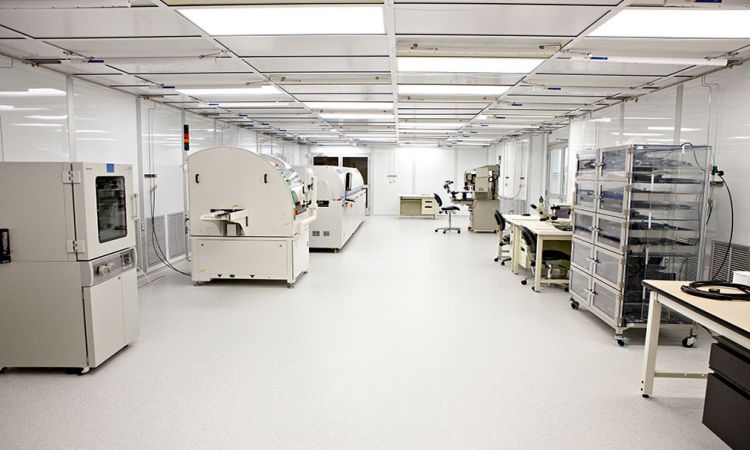 As we advance forward with the 21st century, more and more industries are requiring cleanrooms for their tests and experiments. If your procedures are heavily reliant on uncontaminated air, then you need a clean room. Cleanrooms are designed to filter out particles at the micro-level through air circulation and industrial HEPA filters. Positive pressure is also used to ensure air quality.
As we advance forward with the 21st century, more and more industries are requiring cleanrooms for their tests and experiments. If your procedures are heavily reliant on uncontaminated air, then you need a clean room. Cleanrooms are designed to filter out particles at the micro-level through air circulation and industrial HEPA filters. Positive pressure is also used to ensure air quality.
When you think of cleanrooms, you usually just think of laboratories and medical procedures. However, you’d be surprised to know that they are more common than you think. Even companies selling everyday products now require meticulous cleanroom design for product testing, experiments, and quality control.
Here are 8 industries that require some cleanroom design for their products and services.
Pharmaceuticals
Obviously, the first on the list is the pharmaceutical industry. When you’re in the business of making medicine for sick people, the slightest contamination can have extremely drastic effects. It’s safe to say that pharmaceuticals need the highest level of cleanliness to produce effective medication for patients. Cleanrooms are a must for this industry. When making sterile drugs, cleanrooms must be monitored and disinfected regularly. This is to ensure that no patient gets any adverse side effects from their medication.
Medical Devices
Just as with medication, devices, like diffusion cell apparatus used for medical procedures must be made and assembled inside cleanrooms. It is empirical that medical devices are 100% sterile as they enter the human body. Without cleanrooms, contaminants present in the air can stick to these devices. When these particles enter our body, they will cause major trouble for our internal organs leading to infections or even sepsis in the worst-case scenario. DaklaPack has over 40 years of experience in medical-grade packaging and you should definitely reach out to them if you’re looking for a reliable company to provide packaging for your medical devices.
Military
Contrary to popular belief, the medical industry did not invent cleanrooms. In fact, it was the military that first used and developed cleanroom standards. There are some top-class military experiments that require the highest level of care. These tests can be ruined by contamination from outside sources such as dust, pollen, or even skin flakes from the employees.
Some examples of military applications developed from cleanrooms are the trigger mechanisms produced during World War II. The military was able to create triggers with a near 100% success rate thanks to cleanrooms.
Optics
Clear vision is something that we take a little too much for granted. Photographers and researchers, however, need to rely on certain apparatus to get a better view of their subject. The optics industry creates telescopes, microscopes, and other lenses that are used for devices such as smartphones and cameras.
These industries use cleanrooms to avoid fine dust particles normally present in the air from sticking to the glass. A lens with dust and other contaminants can drastically reduce the photo quality. In severe cases, it can block certain parts of the lens making it unusable. Scientists using microscopes will have a harder time determining certain parts all because of one dust particle.
Aerospace
Space is an entirely different environment than back on earth. When we send up equipment, or even astronauts, through big rockets, we want them to arrive at their destination safely.
Cleanrooms are essential for building equipment such as space shuttles, rockets, and even spacesuits. For the safety of everyone, everything about the space mission must be done in a controlled environment to guarantee that they will work perfectly once they reach space.
Another reason why astronaut equipment must be sterilized is to avoid cross-contamination between Earth microbes and space microbes. Samples collected from space are heavily tested. A particle that should not be there can skew years of data and research.
Electronics
Even the smallest of particles can cause the biggest malfunctions. Our smartphones, computers, and other electronic equipment are now equipped with microprocessors and nanochips. What this means is that even one grain of sand can lead to negative repercussions. A speck of dust may sound harmless but it can cause a lot of trouble to electronic manufacturers.
Research
The research industry perhaps is the one that benefited the most from the development of cleanroom technology. Without contaminants, they can get more accurate data from their tests. As with the medical field, even the tiniest of impurities can skew a lot of research. It can present incorrect information and even compromise samples. Air purity is a must especially when you’re testing certain substances and their reactions.
Food
It is with great relief that I report that the food industry now uses cleanrooms too. With everyone getting more and more conscious about what they ingest, food manufacturers have to lay down specific ground rules to ensure food safety.
One thing you don’t want to happen is for contamination to occur in a big batch of products. This can easily result in a drop in quality, spoilage, or worse, food poisoning. Packaging food in cleanrooms also ensures a longer shelf life. Without the presence of normal germs and bacteria, food packaged inside a cleanroom has a longer shelf life than those that are packed in regular rooms.











